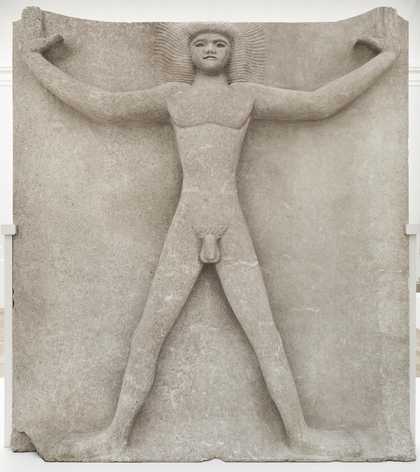4 rooms in Art Around the Building
This display in the Duveen Galleries shows the work of Jacob Epstein, one of the most influential and controversial figures in 20th-century British sculpture
‘My language is form, in all its variety and astonishing wealth, and that is my native language.’ - Jacob Epstein
Epstein’s work fundamentally shaped two periods of British modernism: the 1910s, when he made the radical sculpture of the machine age, The Rock Drill, and the 1930s, when monumental figure groups such as Primeval Gods connected with a younger generation of British sculptors.
Born in 1880 to Polish Jewish parents in New York’s Lower East Side, Epstein attended the Art Students League in New York, before moving to Paris in 1902. There, he studied sculpture at the École des Beaux Arts and Académie Julian before settling in London in 1905. He soon received high-profile architectural sculpture commissions, for the British Medical Association building in London (1907-8) and the tomb of Oscar Wilde in Paris (1909-12).
In the 1910s, Epstein became a key figure in the ‘direct carving’ movement in Britain. This approach emphasised a ‘truth to materials’, in which sculptors worked directly with the stone, using its natural qualities rather than making wax or clay models first. He was influenced by the techniques and imagery used in ancient Egyptian, West African and Oceanic carvings, which he collected. At the time, his portrayal of sexuality as well as the simplified forms of his monumental figure carvings drew both admiration and intense criticism, limiting his opportunities for public commissions.
In addition to his stone sculptures, Epstein also worked in bronze, creating many portraits of family members, artists, writers, entertainers and other public figures. Unlike the criticism of his carvings, his work in bronze was admired and was successful. In the final decade of his career, he received several prestigious public sculpture commissions, including one for Coventry Cathedral in 1955.

